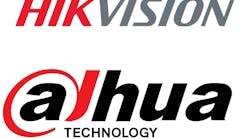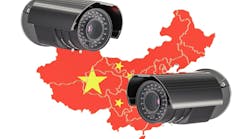Report: Market for enterprise video surveillance services to reach $12B by 2023
According to a new report from ABI research, global enterprise video surveillance camera connections are expected to top 348 million by 2023, generating value-added services revenues of approximately $12 billion.
With the industry’s transition away from analog to IP-based systems with edge and on-device analytics capabilities, Ryan Harbison, Research Analyst at ABI Research, said that video surveillance providers today are continually offering connected camera products and services with strong value propositions.
“Success within IoT is largely dependent on the ability of providers to create highly specialized, value-added solutions based upon clearly defined use cases supported by market demand,” added Harbison. “More than in most other industries, video surveillance providers understand the value that this digital transformation can have on end-user experience and have largely focused on crafting end-to-end surveillance solutions that include everything from device components to analytics and professional services including creation of Video Surveillance-as-a-Service (VSaaS) business models.”
Initially, Harbison said the VSaaS model was developed as a way to create new revenue opportunities for the market given the increasing commoditization of video hardware. In addition, Harbison said providers also realized there was substantial value in integrating video with other security systems, such as access control and intrusion alarms. A number of solution providers now offer extensive professional services in the form of systems integration, device installation, and customized end-user solutions. Harbison added that these services are critical across all deployments and, as a result, video surveillance professional services will generate worldwide revenues $10 billion in 2023.
In the U.S., Harbison said there will be additional opportunities for non-Chinese providers due to the recent ban that was passed by Congress which bars federal agencies from purchasing video surveillance equipment from Hikvision, Dahua and Hytera Technologies.
“While a lot of attention in the video surveillance industry is on China’s camera equipment manufacturers, providers need to realize that for the most part, China buys China. In the short-term, providers should be focused on the U.S. market not only replacing Chinese OEM equipment but also identifying and selling solution services. By focusing on the right solutions with the right value-added services to the right markets, video surveillance solution providers can maximize the opportunity in this competitive market,” Harbison concluded.
For more information about ABI Research’s Connected Enterprise Video Surveillance Solutions report, click here.




